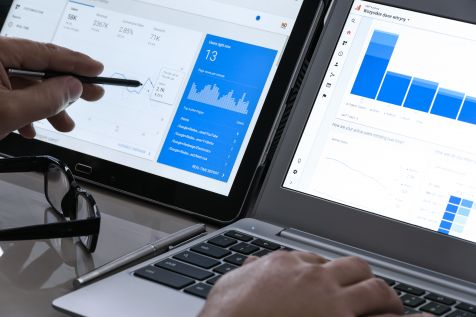
In today's digital age, it's more important than ever to be able to track the effectiveness of your online marketing campaigns. However, not all conversions happen online. Phone calls, in-store visits, and other types of offline conversions can still be significant factors in your overall success. That's where offline conversion tracking comes in, and with Google Analytics 4, it's easier than ever to unlock the power of offline data.
Understanding Offline Conversion Tracking
Offline conversion tracking refers to the process of tracking offline actions that result from online marketing efforts. This includes phone calls, in-store visits, and even direct mail campaigns. By tracking these offline conversions, you can get a better understanding of how your marketing efforts are contributing to your overall success.
There are a few different types of offline conversion tracking, each with its own unique advantages and disadvantages. For example, phone call tracking can be useful for businesses that rely heavily on phone leads, while in-store tracking can help brick-and-mortar stores understand the impact of their digital marketing efforts on foot traffic.
Benefits of Offline Conversion Tracking with Google Analytics 4
Google Analytics 4 is a powerful tool for tracking both online and offline conversions, and it offers a number of advantages over other tracking methods. Here are just a few of the benefits of using Google Analytics 4 for offline conversion tracking:
- Integration with online data: With Google Analytics 4, you can track both online and offline data in one place, giving you a more complete picture of your overall performance.
- Enhanced data accuracy: By using Google Analytics 4's machine learning capabilities, you can more accurately track and attribute offline conversions to your online marketing efforts.
- Advanced attribution modelling: Google Analytics 4 offers advanced attribution modelling, which allows you to more accurately attribute conversions to the channels and campaigns that drove them.
- Cross-device tracking: With more and more users accessing the internet from multiple devices, cross-device tracking is essential for understanding the entire customer journey. Google Analytics 4 makes it easy to track users across devices and channels.
Step-by-Step Guide to Setting Up Offline Conversion Tracking with Google Analytics 4
Setting up offline conversion tracking with Google Analytics 4 can be a bit complicated, but it's easy to do with the right steps. Here's a step-by-step guide:
- Create a measurement plan: Before you can begin tracking offline conversions, you need to create a measurement plan outlining your goals and the metrics you'll be tracking.
- Set up conversion tracking: Once you have your measurement plan in place, you'll need to set up conversion tracking in Google Analytics 4. This involves creating conversion events and setting up goals.
- Configure offline event tracking: To track offline conversions, you'll need to configure offline event tracking in Google Analytics 4. This involves using Google's Measurement Protocol to send data about offline events to Google Analytics.
- Import offline conversions: Finally, you'll need to import your offline conversion data into Google Analytics 4. This can be done manually or automatically, depending on the type of offline conversions you're tracking.
Best Practices for Offline Conversion Tracking with Google Analytics 4
Once you have offline conversion tracking set up, there are a few best practices you can follow to get the most out of your data. Here are a few tips:
- Align online and offline marketing efforts: To get the most accurate picture of your overall performance, it's crucial to align your online and offline marketing efforts as closely as possible. This can include things like using consistent messaging across all channels and campaigns.
- Implement proper data hygiene: To ensure that your data is as accurate as possible, it's essential to implement proper data hygiene practices. This can include de-duping data and using consistent naming conventions for campaigns and sources.
- Regularly review and optimise your tracking: As with any type of tracking, it's essential to periodically review and optimise your offline conversion tracking efforts. This can include adjusting your attribution modelling or tweaking your conversion events to align with your goals better.
- Use your data to form your SEO strategy: By understanding the impact of your online marketing efforts on offline conversions, you can gain valuable insights into what's working and what's not. This information can be used to inform your SEO strategy and improve your overall digital marketing efforts.
- Leverage your data for content creation and marketing: Finally, your offline conversion tracking data can be a powerful tool for content creation and marketing. By understanding the channels and campaigns that are driving the most offline conversions, you can create more targeted and compelling content that resonates with your audience.
Making the Most of Offline Conversion Tracking
Offline conversion tracking is a critical component of any comprehensive digital marketing strategy, and with Google Analytics 4, it's easier than ever to track the impact of your online efforts on offline conversions. By following the steps outlined in this guide and implementing best practices for offline conversion tracking, you can gain valuable insights into your overall performance and use that data to inform your SEO and content marketing efforts.






